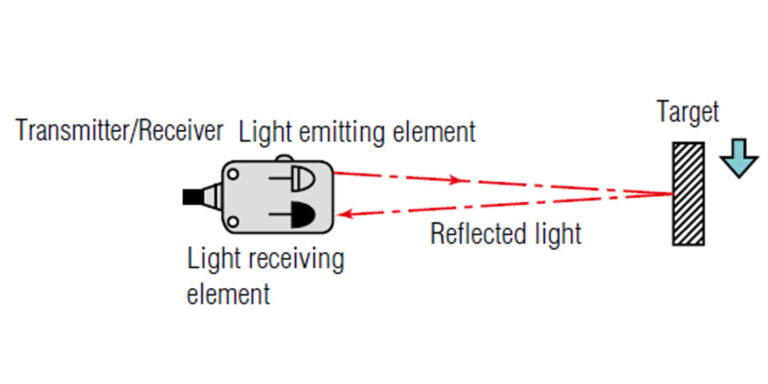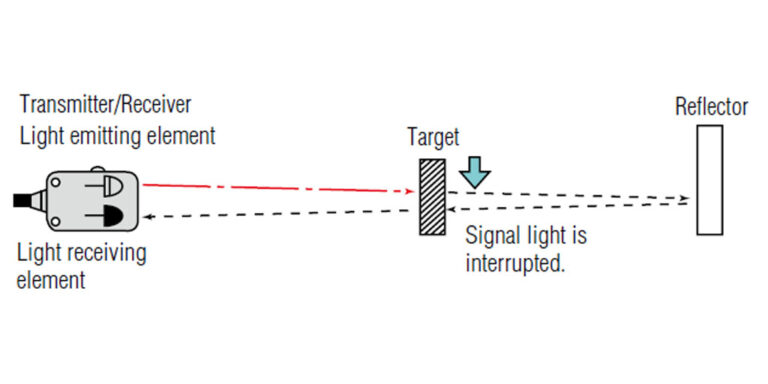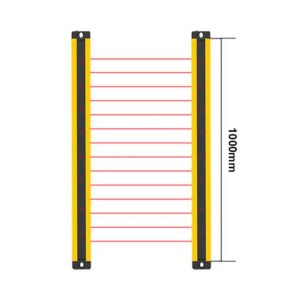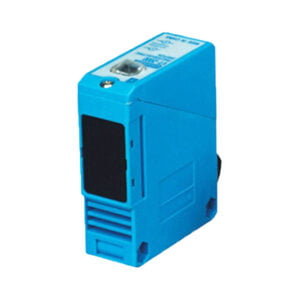Confused about the photoelectric sensor types? This article will give you a comprehensive explanation of the types of photoelectric sensors and their advantages from a unique perspective. Let’s start learning now.
Table of Contents
What is the photoelectric sensor?
Photoelectric sensors, also known as photoelectric switches, photoelectric switches, photoelectric eyes, etc., are devices that convert changes in light into electrical signal output. Simply speaking, a photoelectric sensor consists of 4 parts:an infrared light emitter, a phototransistor receiver, a signal converter, and an amplifier.

Photoelectric sensor types
According to different working principles and detection distances, there are three types of photoelectric sensors: diffuse, retroreflective and through-beam photoelectric sensors. We will explain them one by one in the following content.
Diffuse photoelectric sensor

The diffuse photoelectric sensor is a non-contact switch based on the photoelectric effect. It detects the position and distance of the target object by emitting a beam of infrared light and measuring the intensity of the reflected light.
Diffuse photoelectric sensors are widely used in fields such as automation control, robot navigation, and automatic measurement. The working principle of a diffuse photoelectric sensor will be introduced in the following part..
To understand the principle of diffuse photoelectric sensor, we first need to understand what diffuse reflection is. Diffuse reflection refers to the phenomenon that parallel light is projected on irregular, concave and convex surfaces and reflects in all directions. When parallel rays of light are incident on a rough surface, the light rays are randomly reflected in all directions. The reason why the human eye can see the entire object is mainly due to the imaging of diffuse reflected light in the eye.

The working principle of the diffuse reflection sensor is based on the reflection principle of light. When a beam of light shines on the surface of an object, part of the light will be absorbed by the object, and the other part of the light will be reflected back. This part of the reflected light will be weakened and will be received by the receiver. Because there is an intensity difference between the emitted light and the reflected light, the sensor is able to use this difference to trigger the output circuit.
Retroreflective photoelectric sensor

Compared with diffuse photoelectric sensors, retroreflective photoelectric sensors require mirrors. It works on the same principle as a diffuse sensor. Light is emitted to a reflector, which reflects the light back to the receiver. When an object blocks light, the receiver detects the reduction or interruption of light. The output circuit will then be activated.
The detection distance of this type of sensor is longer than that of diffuse sensors because less light is lost and most of the light is reflected to the receiver(Click here to see why).
Through-beam photoelectric sensor

Through-beam photoelectric sensor working principle: The transmitter and receiver are located on both sides of the object being measured, and the light emitted by the transmitter directly passes through the object being measured and reaches the receiver. When the object under test blocks the light, the receiver detects a decrease or interruption in the light.
Applications: Suitable for detecting transparent or translucent objects and long distance situations.
Features: The detection distance is long and is less affected by ambient light, but it requires the transmitter and receiver to be installed on both sides of the object.
Conclusion
All in all, there are three types of photoelectric sensors: diffuse photoelectric sensors, retroreflective photoelectric sensors and through-beam photoelectric sensors. For sensors, through-beam sensors have the longest detection distance, retroreflective sensors are in the middle, and diffuse reflection sensors have the shortest detection distance.
Lorentzzi, as a Chinese photoelectric sensor provider, can provide all 3 photoelectric sensor types with the best quality, click here to see them or contact us to get our latest prices!









